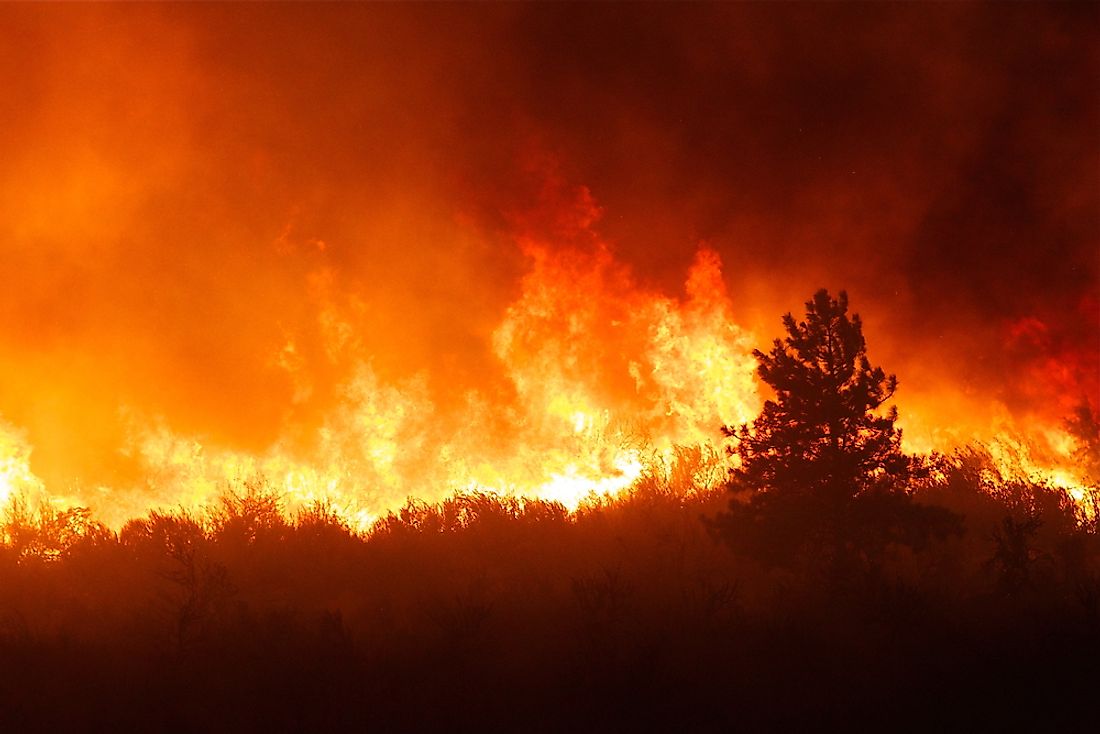What Is A Firestorm?

A firestorm is a huge and destructive fire which produces its own wind system. It is a natural occurrence which develops during some of the most significant wildfires and bushfires. Depending on the chimney effect, which is also called the stack effect, the fire can create a strong updraft and draw in adjacent air, resulting in fierce winds blowing towards the middle of the wildfire. Firestorms can also occur in cities as a deliberate effect of explosives just like the atomic bombing in Hiroshima and aerial firebombing in Dresden.
Formation of Firestorms
A firestorm is the outcome of the chimney effect as the high temperatures produced by the wildfire draws in more air. The chimney effect results in air buoyancy which is caused by the difference between the outdoor-to-indoor air density due to the moisture and temperature difference. The bigger the wildfire and the thermal difference, the higher the buoyancy which in turn creates the the chimney effect. The presence of jet steam near or over the fire can accelerate the draft, and as its updraft mushrooms, some strong incoming gusty winds grow around the wildfire and supply it with the additional air. The excess air might seem to prevent further spread of the firestorm, but the created turbulence might change the direction of the inward surface winds.
The firestorm’s greater draft draws in high oxygen quantities which increases combustion and heat production. A firestorm’s heat manifests itself as infrared radiation which may ignite all the flammable substances within its vicinity. The radiated heat helps the fire expand while increasing its intensity. When a firestorm is forming, numerous huge fires merge to create a single hot gas convective column which rises from the burning region. Therefore the wildfire’s front is stationary, and the incoming wind controls the spread of the fire.
Characterization of Firestorms
Firestorms are characterized by the strong winds gusting towards the wildfire, the air around the fire front, the buoyancy effect caused by rising of hot gases over the wildfire, and drawing the fresh air from its surroundings. The wind from its perimeter blows the firebrands into the fire-front and cools the unignited fuels near the burning area thus making it difficult for the radiated heat to ignite them thus controlling the fire.
The extremely high temperature within the burning area ignites all the flammable materials until it reaches its tipping point. Once the fire consumes all the fuels within its vicinity and reduces fuel density required to maintain the wind system, the firestorm breaks down into isolated fires.
Effects of Firestorms on Climate and Weather
A firestorm produces hot floating smoke clouds which are made up of water vapor which creates condensation clouds (pyrocumulus clouds) as it enters the upper region of the atmosphere. Under the right conditions, this fire cloud can grow into a firestorm cloud (pyrocumulonimbus clouds) which produces lightning. The black rain which started twenty minutes after the Hiroshima bombing produced soot-filled rainwater for up to three hours.











